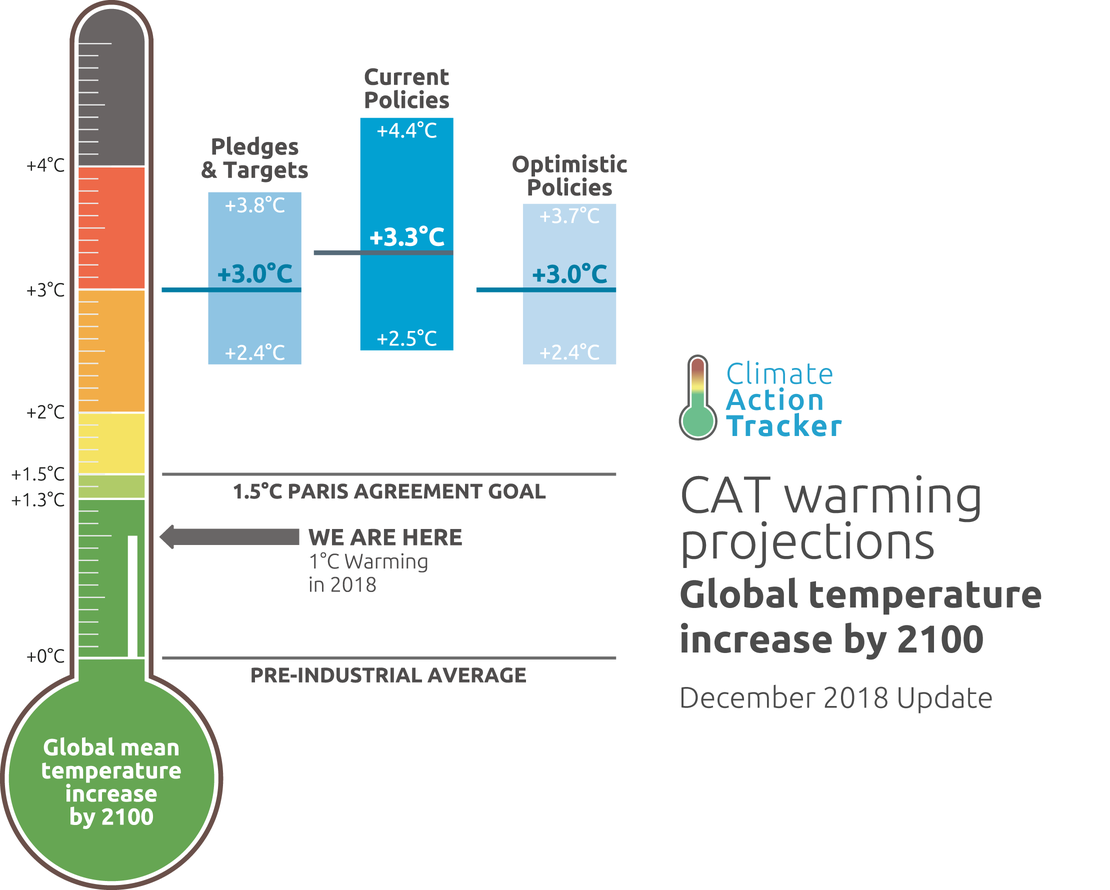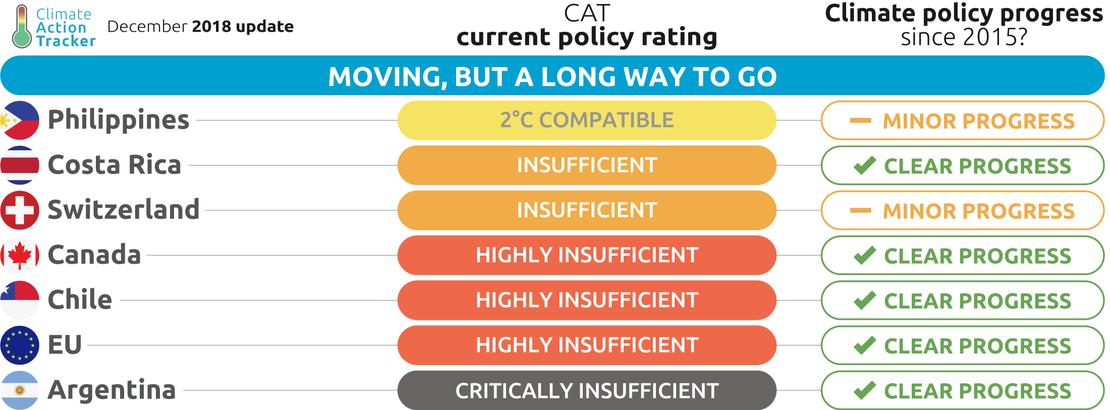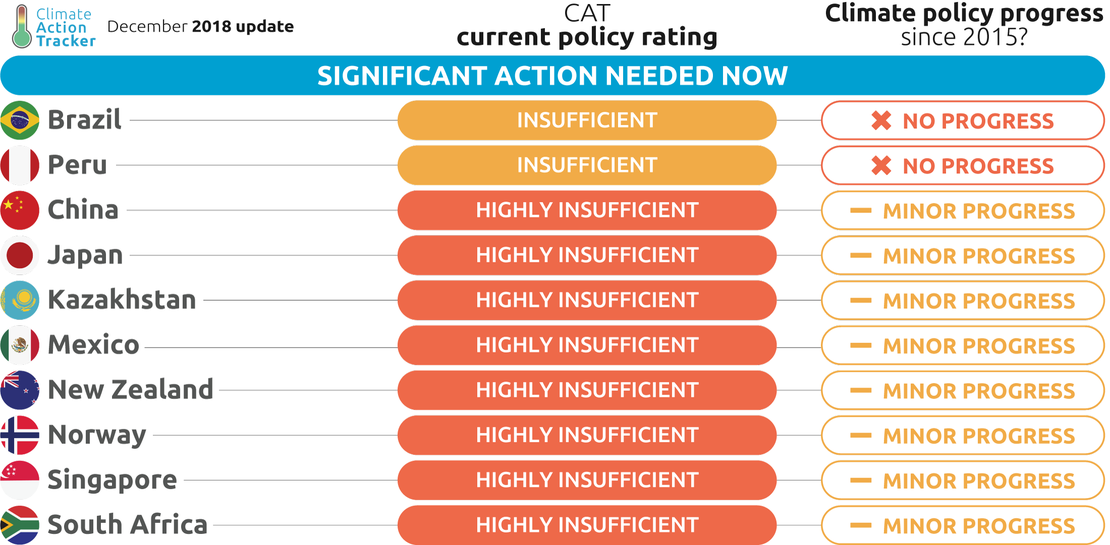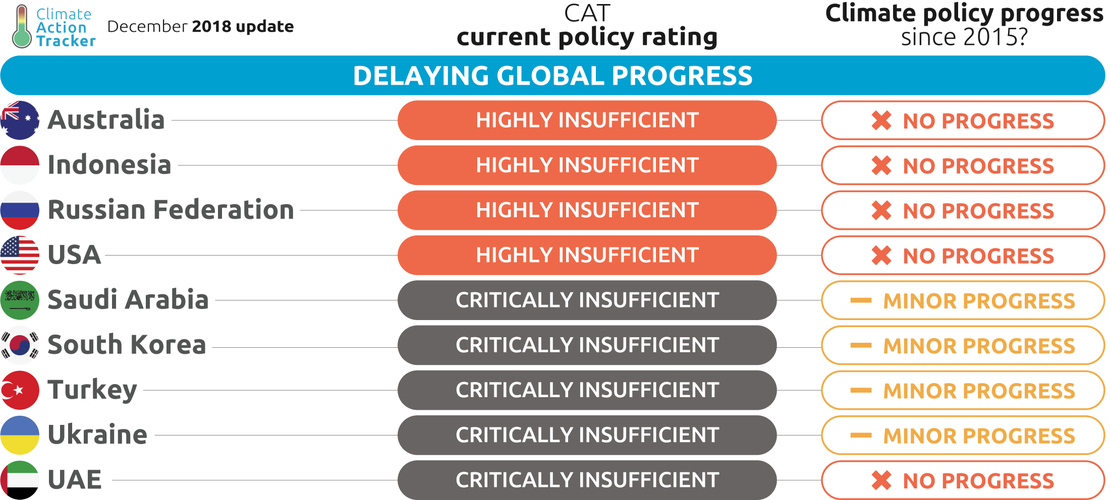Some progress since Paris, but not enough, as governments amble towards 3°C of warming
Attachments
Summary
The Climate Action Tracker (CAT) estimate of the total warming of the aggregate effect of Paris Agreement commitments and of real-world policy shows little change. If all governments achieved their Paris Agreement commitments the world will likely warm 3.0°C—twice the 1.5°C limit they agreed in Paris.
Country ratings
- Underneath the lack of progress at the global level, however, the CAT has detected real movement in a number of countries which, if extended, could bend the global emissions curve downward.
- Of the 32 countries the Climate Action Tracker follows, no government has yet increased its Paris Agreement commitment, so there has been almost no change to the Climate Action Tracker’s country ratings. Under the Paris Agreement enabling decisions all countries are to update their commitments—or Nationally Determined Contributions (NDCs)—by 2020.

Warming projection update
- Little to no progress has been detected globally on climate action either, with the total global effect of currently implemented policies in countries expected to lead to warming of 3.3˚C by 2100, which is still above the Paris Agreement commitment level.
- If governments, however, were to implement the planned or additional policies they have in the pipeline, warming could be reduced by 0.3°C to 3.0˚C by 2100, with global emissions in 2030 projected to be a little below those under full implementation of the Paris commitments.

The CAT’s projected warming from Paris Agreement commitments and real-world action of 3.0°C and 3.3°C, respectively, and lack of progress in advancing action stands in stark contrast to both the clear warning from the IPCC in its Special Report on 1.5°C of the consequence of exceeding 1.5°C warming and the strong finding that limiting warming to this level is feasible and has substantial economic and sustainable development benefits.
Policy action on the ground
To find out whether there has been any progress on the ground, the CAT has looked at the most recent policy movements made by governments since Paris in 2015.
- The majority of countries we track have not yet fully aligned their policies to actually achieve their commitments under the Paris Agreement.
- However, we do detect real movement, with Argentina, Canada, Chile, Costa Rica, Ethiopia, the EU, India and Morocco taking significant steps in the right direction.

- There has also been some movement in most of the other countries.

- If extended and scaled, these combined efforts could begin to bend the global emissions curve.

- Countries with no progress or movements in the wrong direction in emission reduction terms include Australia, Brazil, Indonesia, Russia and the UAE.
- In the USA the Trump Administration continues its efforts to unwind policy, however emissions are slowing as coal continues to exit the power market, driven by the declining costs of renewables and storage.

Mixed results
Progress on climate action has been mixed in 2018:
- While some countries, such as Norway and Costa Rica are forging ahead with decarbonisation of transport and renewable energy deployment, others risk losing their climate leadership positions, such as China, where coal use rose again for a second year running, and Brazil which appears to have turned away from its forest protection policies even before its recent change of government.
- Several countries published, adopted or reinforced energy or electricity sector roadmaps which gives reason for hope, such as Chile’s 2050 energy strategy which aims at decarbonising the energy system, India adopting its National Electricity Plan and South Africa’s long-awaited energy resource strategy which foresees a shift away from coal toward renewables and gas.
The changes in CAT’s warming estimates in this update are largely due to improvements in methodology and data updates rather than actual government action in any direction.
Stay informed
Subscribe to our newsletter